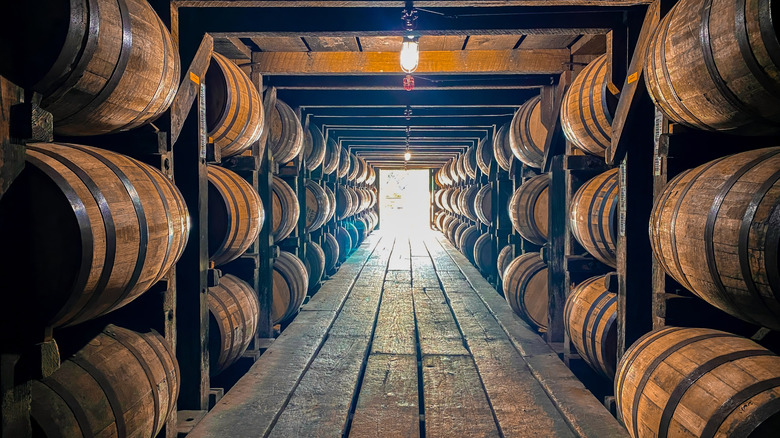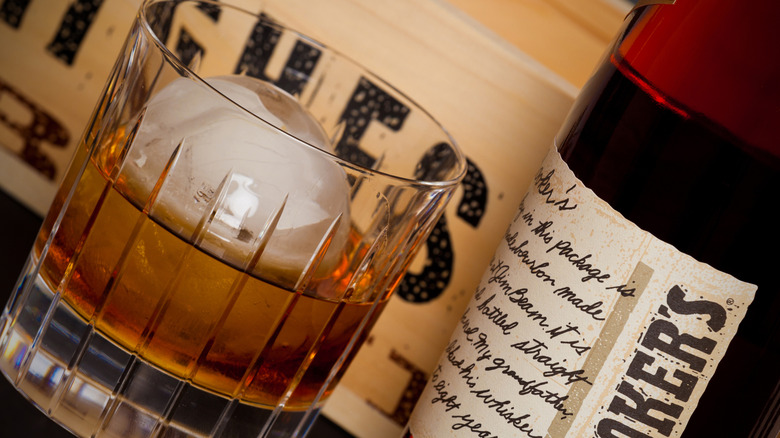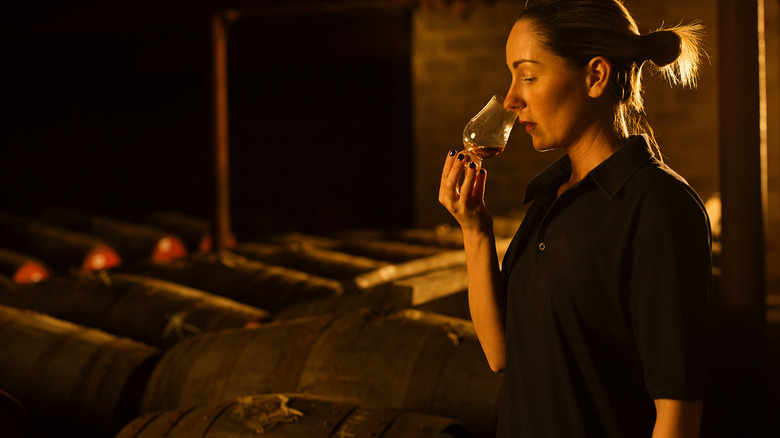What Does Small Batch Whiskey Actually Mean?
Newcomers to whiskey (or "whisky" if you're talking about Scotland, Japan, or Canada), encounter a number of terms plastered on each whiskey bottle. Some — like proof, bottled-in-bond, and the recently approved term American single malt — meet specific legal guidelines. Other, fuzzier terms are called puffery (like one that might claim it's "an old family recipe rediscovered in Al Capone's underwear drawer") and lack any legal definitions. Examples include artisanal, handmade, and small batch. This last one might be the most confusing: Couldn't the term "small batch" be codified easily? The answer is perhaps it could have been, but that ship has almost certainly sailed. These days the term small batch can be applied fast and loose, and the definition and parameters can vary by producer.
And yet, the concept of small batch isn't completely without merit. Whiskey makers generally use it to highlight a release featuring a blend of a very few, highly curated barrels. Usually, what makes a whiskey small batch is that only a handful of different barrel types (that is, barrels holding differently aged, stored, or finished whiskeys) are selected to create the final blend. To clarify, there could be dozens or hundreds of barrels of each component whiskey, also confusingly called a "barrel". The thing is, there's no legal cap to how many component barrels constitute "a few," or even if a producer defines its small batch this way. For the consumer, an awful lot of trust is placed in the label, with no regulation to back it up.
Thank Jim Beam for the small batch concept
It might seem counterintuitive or corporate doublespeak, but Jim Beam — arguably the largest whiskey producer in the world — is credited with first applying the term small batch to spirits. According to an article in VinePair (and independently confirmed to Chowhound by representatives of the company), Booker Noe (the founder of Jim Beam's grandson) began using the term small batch back in the late 1980s to describe Booker's, a new brand at the time. What began as unofficial tastings Noe would share with his friends, in contrast with the mass-produced, very consistent Jim Beam, Booker's was something of an evolving project of limited bottlings featuring a few carefully blended barrel types.
Booker's is still an active craft project from what is now part of Suntory Global Spirits. Each year the brand releases four or five distinct small batch blends with unique nicknames and inspirations. The fall 2024 release, Booker's Jimmy's Batch, consists of four different whiskeys stored on specific floors of different warehouses, creating a unique flavor profile. Four Roses, another large brand, launched its Limited Edition Small Batch in 2006, and each year releases unique combinations of four of its 10 distinct bourbon recipes. Last year's release featured component whiskeys ranging in age from 12 to 20 years. By the 2010s, the concept of small batch was hardwired into the vocabulary of producers and fans alike.
Small batch doesn't mean limited edition
According to the VinePair article, Booker Noe didn't set out to invent a major category term. He was simply highlighting the unusual barrel curation of Booker's bourbon. Regardless, he gave birth to a puffery monster. These days there are self-defined small batch whiskeys from scores or hundreds of brands. The challenge comes in defining the term.
"Right now, small batch whiskey is similar to the Wild West," Colby Frey, co-founder of Nevada's Frey Ranch Distillery, told Chowhound. "Somewhat lawless and hard to wrangle. You can throw 'small batch' on a label and it could be a blend of three barrels or 300 barrels." The good news is that most brands seem to limit component whiskey styles to between 10 and 50 different barrels.
The term is also no longer limited to whiskey. Tequila giant Patrón considers its product small batch, despite making tens of millions of bottles every year, because it distills its agave spirit in (lots and lots of) small production runs, or batches. There are small-batch soy sauces and small-batch gins. You can even find the phrase "small batch" on the labels of some of the best butter at the grocery store. The concept may have gotten out of hand, according to Frey.
"This is certainly an area of American whiskey production that would benefit from a more defined classification," he suggests, "so that a consumer can pick up a bottle of small batch whiskey and know exactly what to expect."


